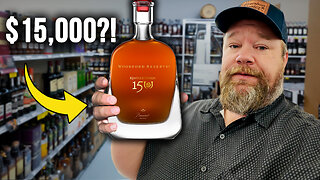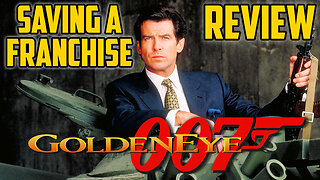How to play Wizards' Chess
Learn the rules to the board game Wizards' Chess quickly and concisely - This video has no distractions, just the rules. For a refresher of the original rules of Chess, check out this video: https://youtu.be/iPXcfS0UDlI
Don't own the game? Buy it here:
amazon.com - https://amzn.to/45ykGE0
amazon.ca - https://amzn.to/45xPa9o
(As an Amazon Affiliate, I earn from qualifying purchases)
Play chess online for free here:
https://link.triplesgames.com/Play-Chess-Online
(As an chess.com affiliate we earn from qualifying subscriptions)
Want to see how my chess board was made, check out this video: https://link.triplesgames.com/WoodUmakeIt
Buy Double-Sided Chess Discs here: https://buy.triplesgames.com/DoubleSidedChessDiscs
RULES:
The rules are the same as regular chess except for these changes. The object of the game is to either checkmate or spellmate your opponent.
Shuffle the spell deck and deal 2 cards facedown to each player. Players look at their own spell cards but keep them hidden from their opponent. At the start of your turn, if you hold less than 5 spell cards in your hand, then you draw 1 spell card. On your turn, Instead of moving a piece, you may cast a spell, cancel a spell, or counter a spell.
To cast a spell, lay the card you wish to cast faceup on the table and indicate which piece is performing the spell. There are 3 spell caster ranks: Apprentice, Conjurer, and Wizard. Pawns are rank apprentice. Knights, Bishops, and Rooks are rank Conjurer. Queens and Kings are rank Wizard.
Each spell card indicates the caster’s location on a 5 by 5 board. The highlighted squares indicate the range of the spell. The Apprentice can only target the lightest colored squares. The Conjurer can target the two lighter shades of colored squares. The Wizard can target any colored square. Spells can affect 1 or more pieces on the board. Whenever multiple pieces are within range of a spell, then the piece with the lowest rank is targeted first. Ranks from lowest to highest are: Pawn, Knight, Bishop, Rook, Queen, King. If multiple pieces of the same rank are targeted, then the caster picks which ones are targeted. Spells do not affect friendly pieces in their range.
After you cast your spell, your turn ends but the spell is not resolved, and no pieces are removed yet. Your opponent’s turn begins with drawing a card and they can now use their turn to either cancel the spell, counter it, sacrifice, or ignore it. You may not move a targeted piece out of range to protect it.
To cancel a spell, the defending player must play an opposing spell of the opposite element of equal or greater value as indicated by the spell card’s value number in the top right. 1 is the highest value and 9 is the lowest. If the spell is cancelled, then discard both spell cards and nothing happens. Pieces may use any spell card to cancel with, regardless of that targeted piece’s caster rank.
To counter a spell, you must play a card of with the same name that is of a different element. When you do, you discard the original spell and now your piece that had been targeted, uses the spell you played for the counter back against your opponent, targeting the lowest rank piece. If you had countered a spell that was targeting multiple pieces, then the highest rank piece is the one to perform the counter spell. Your turn ends and your opponent goes, with the same options to respond. Card levels 7 to 9 cannot be countered.
To sacrifice, move a lower rank piece than what your opponent’s spell is currently targeting into the spell’s range to force the spell to recalculate its targets. When done correctly, the lower rank piece will be hit instead or a higher rank one. Your turn ends and the spell resolves by removing the proper pieces from the board in the targeted area and the spell is discarded. In order to sacrifice, the piece must use its traditional chess move and not a spell move.
The final option is to ignore it. In this case, after drawing, remove the targeted pieces from play and discard your opponent’s spell. Then you perform the rest of your turn like your normally would. You are allowed to ignore a spell even if you could have cancelled, countered, or sacrificed.
Whenever your King is targeted by a spell, it is considered to be in check. If you cannot protect the King from this spell then it is spellmate and your opponent wins. There are 2 special spells in each element that allows the King to escape check or checkmate. Only the King can use those cards to escape capture.
Once a card is played you may not take it back to do something different. If the draw deck runs out of cards, do not shuffle it into a new draw deck, but continue playing without drawing new cards.
-
![I'm Grand (Master) [Official Music Video] - Triple S Games & Sheet Music Boss](https://hugh.cdn.rumble.cloud/s/s8/1/9/v/q/d/9vqdo.0kob-small-Im-Grand-Master-Official-Mu.jpg) 3:36
3:36
Triple S Games
6 months ago $0.05 earnedI'm Grand (Master) [Official Music Video] - Triple S Games & Sheet Music Boss
1.35K3 -
 20:00
20:00
Clownfish TV
16 hours agoGoogle Hurt ITSELF in Its Confusion!
14.1K27 -
 24:20
24:20
Brewzle
21 hours agoWe Went Unicorn Bourbon Hunting In Louisville, KY
23.8K5 -
 35:39
35:39
Degenerate Jay
19 hours agoGoldenEye 007 Saved James Bond - Movie Review
23.6K1 -
 14:54
14:54
Mr Reagan
19 hours agoWE ARE ALL MAGA NOW
18.7K34 -
 15:35
15:35
Space Ice
18 hours ago'The Beekeeper' Exposes The Dark, Gritty, & Violent World Of Apiculture - Best Movie Ever
13K20 -
 3:29:53
3:29:53
SonnyFaz
23 hours agoEric Kelly Trains Sonny FULL STREAM
22.1K8 -
 9:32
9:32
China Uncensored
13 hours agoBad Things Are Happening In Taiwan...
24.8K17 -
 38:24
38:24
Tucker Carlson
10 hours agoTucker Carlson and Donald Trump Jr. Respond to the Trump Verdict
114K547 -
 2:01:47
2:01:47
Fresh and Fit
10 hours agoOne Hit Wonder 🤡 Kicked Off For THIS...
185K380